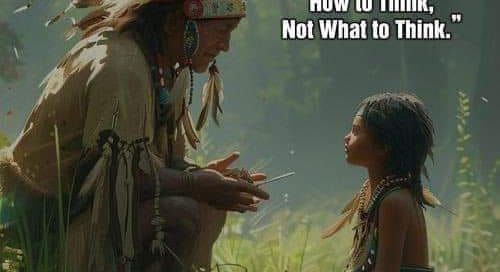"The Social Justice Smokescreen: Why We Can’t Talk About the Truth Behind Residential Schools"
is the entire Truth and Reconciliation Commission foundation based on LIES?
In recent years, the discourse around Canada's First Nations and the legacy of residential schools has been tightly controlled by a dominant narrative: one of cultural genocide and systemic abuse. This has been promoted by the Truth and Reconciliation Commission (TRC) and various global entities, including the United Nations. The result has been billions of dollars in reparations and widespread societal guilt. However, a growing number of researchers and academics, such as Michelle Stirling and Frances Widdowson, argue that this narrative is not only misleading but potentially harmful. They assert that much of the reconciliation process is based on half-truths and omissions, serving political and ideological agendas rather than addressing the real issues faced by First Nations communities.
The United Nations has played a pivotal role in creating and perpetuating a false narrative about residential schools. According to critics, the UN's agenda is not truly about supporting Indigenous rights but rather about reshaping the narrative to dilute and control First Nations' sovereignty.
One way the UN has done this is by using the term"Indigenous" which is to include not just First Nations peoples, but also Métis and Inuit groups. This has had the effect of diluting the distinct cultural, legal, and political rights of First Nations, merging their unique struggles into a larger, more generalized category. By expanding the term "Indigenous," the UN's agenda, critics claim, has obscured the specific grievances of First Nations people, effectively undermining their calls for self-determination. Some argue that this reclassification further weakens First Nations' bargaining power in negotiations related to land claims, resource rights, and reparations.
Moreover, this redefinition moves away from earlier terms like "Indians", which referred specifically to the legally recognized status under the Indian Act. The switch to "Indigenous" thus creates a homogenization that reduces the political force of First Nations' claims, leaving them lumped together with other groups that have different histories, cultures, and legal statuses.
Were Residential Schools Exclusively About Cultural Genocide?
The official narrative surrounding residential schools, bolstered by UN reports and TRC testimonies, frames the schools as instruments of cultural genocide. While it is undeniable that many students suffered abuse, critics like Stirling and Widdowson argue that the narrative fails to capture the full complexity of the situation. Stirling, for example, points out that many of the stories presented to the TRC are anecdotal and lack corroborating evidence. Instead of a nuanced, fact-based investigation, the TRC’s findings have been shaped by emotional testimonies, reinforcing a one-dimensional view of history.
A fact that is often omitted from the dominant residential school narrative is that many non-Indigenous children, including poor white children, were also placed in these institutions. These children experienced similar isolation, strict discipline, and often the same forms of abuse as Indigenous children. However, the mainstream narrative, largely shaped by the UN and TRC, focuses exclusively on the Indigenous experience, framing the schools as instruments of cultural genocide aimed solely at First Nations, Métis, and Inuit. This absence of broader context has allowed the UN and other political bodies to frame residential schools exclusively as tools of Indigenous suppression, reinforcing their agenda of decolonization. By excluding the experiences of non-Indigenous students, the narrative becomes more rigid and emotionally charged, reducing the space for critical inquiry and alternative interpretations of these historical institutions.
This exclusion of non-Indigenous victims from the narrative further cements the idea that residential schools were a targeted act of colonial violence against Indigenous peoples alone, reinforcing the moral and political weight of the TRC’s findings. Critics argue that the inclusion of white children in these institutions complicates the narrative, suggesting that the schools were more a product of broader social issues, such as poverty and state control over children, rather than a deliberate attempt to erase Indigenous cultures.
The billions of dollars allocated for reparations following the TRC’s recommendations have not only failed to significantly improve the socio-economic conditions of First Nations but may have also entrenched a cycle of dependency. Critics argue that the focus on financial compensation, rather than addressing systemic governance and economic issues within First Nations communities, has fostered a culture of entitlement.
By tying First Nations communities to government handouts, critical thinkers may claim that the UN's narrative has stifled opportunities for economic independence and self-governance. The reparations process has shifted attention away from developing infrastructure, educational systems, and governance models that could lead to long-term prosperity. Instead, it reinforces a framework where “Indigenous” communities rely on compensation for historical grievances rather than focusing on practical solutions for future development.
Despite the billions of dollars in restitution paid out to these communities, many still face crippling poverty, inadequate infrastructure, and lack of basic resources. The question that should be on everyone’s mind is: where has all this money gone, and why hasn’t it improved the lives of Indigenous peoples? The TRUTH is that the entire reconciliation narrative, heavily pushed by the government and international bodies like the United Nations, has been built on false promises and misdirection. While reconciliation is presented as a path to healing, it's become a tool of political manipulation and financial mismanagement, distracting from the real issues that continue to plague these communities.
Much of the money from restitution is funneled into bureaucratic programs and organizations that eat up the funds through administrative overhead. Instead of the billions going directly to improve housing, healthcare, education, and economic development, it gets lost in the layers of government bureaucracy and legal complexities. Indigenous people are being deceived into thinking that these payments are designed to help, but in reality, they are band-aids on gaping wounds. The narrative of reconciliation has become a way for the government to appear benevolent while ensuring that the root causes of poverty, land displacement, and lack of economic independence, are never fully addressed.
Is the reconciliation narrative really about healing; or is it's about control?
Is the entire reconciliation narrative, as pushed by the government and the UN, really about healing Indigenous communities, or is it setting the stage for something more strategic? Specifically, could it be laying the groundwork for the implementation of United Nations Declaration on the Rights of Indigenous Peoples (UNDRIP). When we dig deeper, it becomes clear that the narrative surrounding reconciliation is not about acknowledging the past, BUT about reshaping land and resource agreements in ways that undermine the original treaties signed with First Nations.
The historical treaties between First Nations and the Crown explicitly place land, water, and resource rights under the jurisdiction of First Nations. These treaties, despite their flaws, represent legally binding agreements that safeguard these rights. However, by expanding the definition of Indigenous to include Métis and Inuit—groups not originally part of those treaties, the narrative begins to shift. The term Indigenous now broadly encompasses all these groups, diluting the unique legal standing of First Nations as the original signatories to these agreements. Could this be an intentional move to erode First Nations' treaty rights, paving the way for land and resource redistribution under UNDRIP, a framework that emphasizes Indigenous rights but under a much broader umbrella? 100%
If this broader definition is used to reframe land claims and resources, it allows the government and the UN to divide these critical assets between Métis, Inuit, and First Nations, despite the original treaties clearly identifying First Nations as the rightful stewards. The reconciliation narrative, then, could be a tool for shifting control away from First Nations and distributing it more broadly, weakening their claim to the land, water, and resources that the treaties guarantee. This shift serves global and national interests, giving governments and multinational corporations greater access to those resources, all while appearing to be in the spirit of justice and reconciliation.
The narrative surrounding UNDRIP (United Nations Declaration on the Rights of Indigenous Peoples) has been widely celebrated as a tool for empowering Indigenous groups, restoring land rights, and ensuring self-determination. But beneath the surface, the fine print may tell a different story, one that raises serious questions about who will really control the land and resources. While many First Nations, Métis, and Inuit groups are being led to believe that UNDRIP will grant them true sovereignty over their traditional territories, the reality might be far more insidious. Instead of returning control to Indigenous peoples, it could be a carefully orchestrated plan that ultimately funnels power back to the monarchy, leaving Indigenous groups with little more than symbolic autonomy.
This raises an important question: Is UNDRIP being used as a tool to hoodwink Indigenous peoples into thinking they will regain control, while in reality, it maintains the status quo of Crown authority? my answer is 100%. By creating a narrative of empowerment and restitution, the government and the UN are diverting attention away from the fact that Indigenous peoples are still not being given the true sovereignty and control they have been promised. Instead, they are being drawn into a system where control over land, water, and resources remains largely in the hands of the monarchy and state institutions, perpetuating the very colonial dynamics that UNDRIP claims to dismantle.
In the end, UNDRIP may serve more as a symbolic victory rather than the concrete, transformative change that Indigenous groups are being led to believe. It’s crucial for “Indigenous” leaders and communities to critically examine this fine print and question whether this is truly a path to self-determination, or just another form of control wrapped in progressive language. The danger lies in accepting this narrative at face value, only to find out later that, once again, they’ve been deceived.
So, why are we celebrating? The truth is, this narrative of reconciliation is more about theatre than actual justice. It’s a carefully crafted performance meant to placate Indigenous communities with gestures of compensation and symbolic gestures, while the real control over land, water, and resources remains firmly in the hands of the monarchy and the state. Rather than being empowered, Indigenous groups are being subtly deceived into thinking they are regaining control, while in reality, they are being pulled deeper into a system that perpetuates their dependence.
If reconciliation is built on a lie, and the real intent is to erode the treaty rights and consolidate control under the guise of progress, we must ask: what are we truly celebrating?
And I repeat…







I see the dilution of the term indigenous in Bill c293. no definition at all! Do you wonder whether it is bill gates daughter. If globalists control the narrative they do it to benefit themselves. Or they do it all the time, but not this time?
Watch they will put interim corporations to manage land transfer, give loans or grants or lands to nonindegenous, while trying to get groups to hate each other.
Not doing it. Not going to dislike first nations because they want to divide us. I know who does this.
Thank you for you in-depth analysis of this issue. I'm sad to know that no matter how many orange tee-shirts are worn, 1st Nation peoples still don't have clean water to drink.